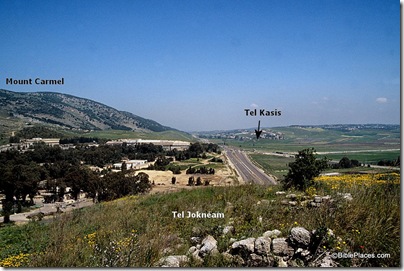Construction in Nazareth required a salvage excavation, and the presence of graves required quick action in order to minimize protests of ultra-orthodox. From the Jerusalem Post:
In one day of intense work, the Israel Antiquities Authority (IAA) completed on Sunday the excavation of ancient burial caves, uncovered at a construction site on Paulus Road in the center of Nazareth.
Groups of haredim, who arrived at the site in the early morning hours, protested what they considered disrespect to the dead. Police detained 49 of them for disturbing the peace and trespassing on the private property of the entrepreneur who is erecting a commercial center there.
A variety of bronze tools and bones, some of them human, were found in a series of caves from two periods in the Middle Bronze Age (2,200 BCE and 2,000 BCE), and in a series of caves from the Iron Age (1,000 BCE).
The story continues here. For some reason, the photo posted is the same as that from yesterday’s story of the Tel Kasis excavation. My guess is that the photo belongs here and not to the Kasis story.
I do not recall any previous evidence for Iron Age settlement in Nazareth. The city is first mentioned in the New Testament, and even then ignored by all other contemporary sources.
